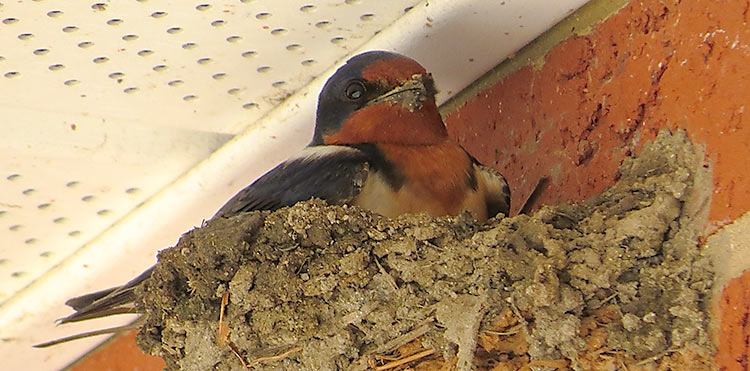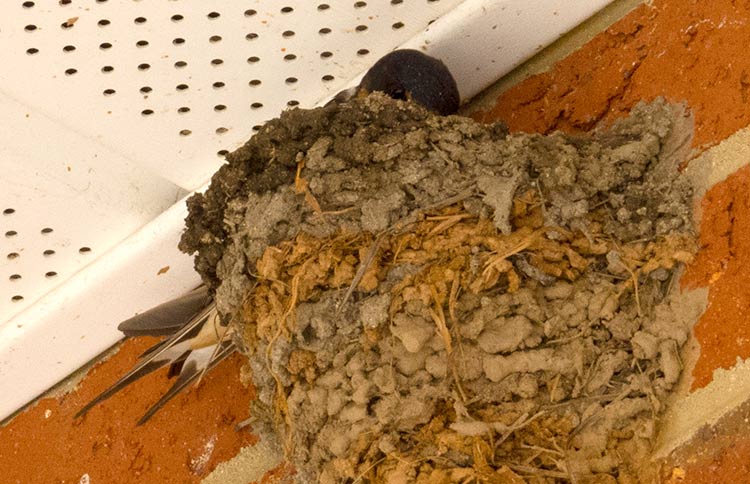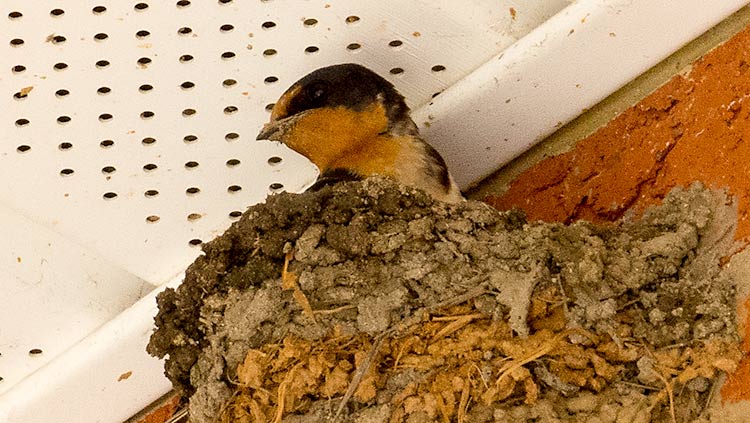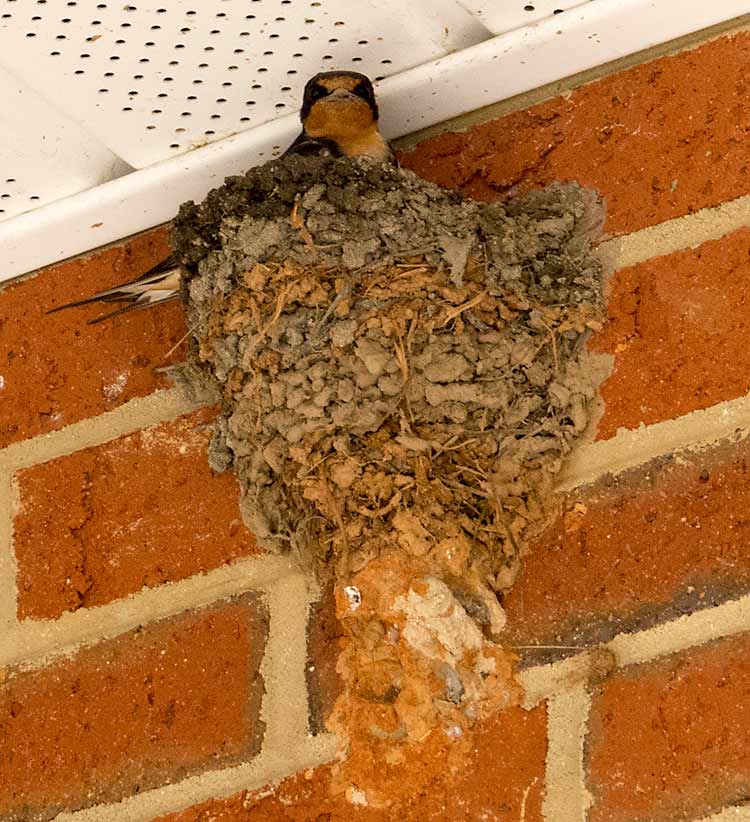I found this Barn Swallow (Hirundo rustic) busily building its mud-pellet nest up under the eaves of a local grocery chain store. They are very adept at using human structures such as porches or farm buildings as nesting sites. Nests constructed of mud might not be too durable out in the rain. This one has just returned with a pellet of mud in its beak.
Barn Swallows have the widest range of any swallow. They can be found from Argentina to Asia. There are several other species of Hirundo in Africa, but this is the only U.S. species. We have several other swallow species in the U.S. (in related genera), but none as comparable with human development. Incidently, Hirundo comes from the Latin word for “swallow”, and rustica means “from the country”. We could have called them “Country Swallows”, but they really do like to nest in barns, so Barn Swallow is OK, too.
The bird is placing its mud pellet into the nest structure. The most recently deposited layer of mud, probably representing the days work up until this photograph, can be distinguished near the top of the nest where it is still wet and dark. A long, forked tail is one of the field marks, along with its chrome-blue back and chestnut and white underparts, that make it easy to recognize the Barn Swallow.
The bird then raised it head, presenting a side view and showing that the mud pellet has now been placed. The black and chestnut color pattern on the head is also characteristic of this species.
This photograph shows the construction of the entire nest. The lowermost, orange mud forming the base of the nest looks quite different. It might be a base left over from last year’s nest. Barn Swallow nests are often considered to be unsightly in public places, and the top of this nest may have been removed last year by some overzealous person cleaning the store front. Further up the nest it is apparent that the bird collects mud from places with differently colored soil. Some sort of fibrous plant material has also been worked into the nest.
If you have a Barn Swallow nest around your residence, leave it alone and enjoy these terrific birds. They are relatively tolerant toward people, and they like to fly very low over the ground or bodies of water.. With their brilliant color, forked tail, and amazing flight skills, they are a sight to see!





Fascinating-unless it was building a nest on my property like those Phoebes!
Send your Phoebes down our way! We will teach them manners and send them back.